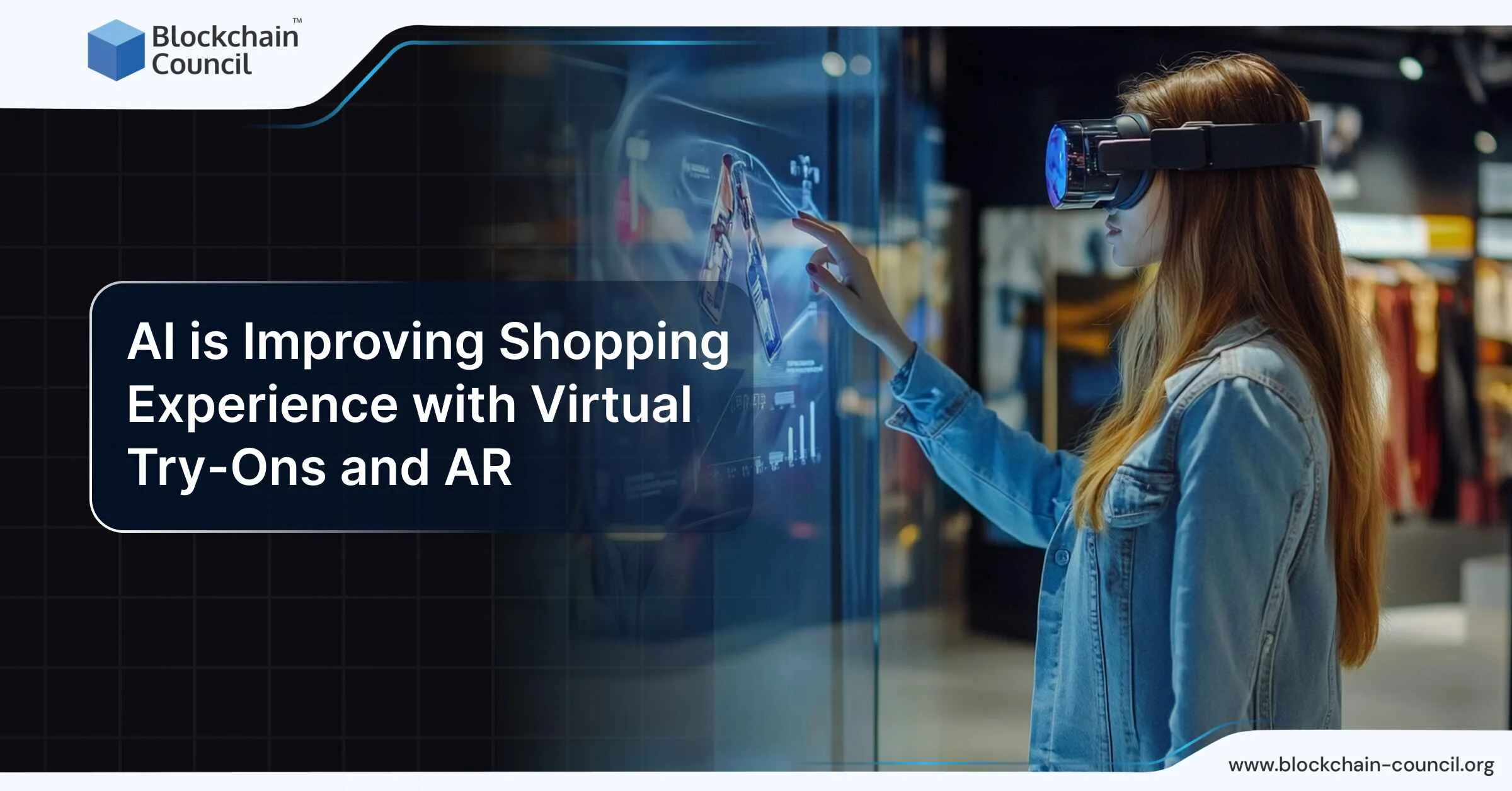
- Amber Smith
- February 12, 2025
Artificial Intelligence (AI) and Augmented Reality (AR) are quickly becoming key parts of today’s shopping landscape, especially with the rise of virtual try-on options.
What Is a Virtual Try-On?
Virtual try-ons mix AI with AR to let people digitally try products. From clothes to makeup and accessories, shoppers can get a feel of how something might look on them without needing to try it in person. This works by placing virtual images of products on a live feed or saved image of the shopper. These tools are handy for online shoppers, helping connect the gap between online and in-person shopping.
The Certified Artificial Intelligence (AI) Developer™ credential can give you an edge in building AI systems for retail experiences like virtual try-ons and augmented reality.
How AI and AR Collaborate in Shopping
AI and AR combine to make virtual try-ons more customized and accurate for online shoppers. AI, through algorithms, looks at customer data like past purchases or preferences. With this information, brands can recommend products better suited to the individual, improving the overall experience. AR then brings the items to life by overlaying digital images—whether clothes, makeup, or accessories—onto real-time views or photos, giving users a good preview of how things might look.
For instance, companies like Sephora and Warby Parker use AR to let users try makeup shades or glasses within their apps. These digital tools help shoppers make better choices before buying. With AI helping personalize recommendations, customers enjoy a more relevant and easier shopping experience.
Generative AI is also helping retailers create lifelike images of clothing on various body types. Google’s generative AI, for example, shows realistic representations of fabric textures and how garments might fold or wrinkle on different people. This offers a closer feel to trying on clothes in a real store.
Different Types of Virtual Try-On Technology
There are several virtual try-on solutions available, each serving unique needs:
- Generative Image Try-On: Users upload their photos and have clothes digitally added to their images. This user-friendly and budget-friendly option makes it a good choice for smaller businesses. However, it’s a static view, which means you can’t see how the clothing moves or stretches.
- 3D Avatar Try-On: This approach uses measurements to create an avatar for the user to compare the fit better. Although this is more advanced and gives detailed sizing information, it can feel less real since the user interacts with an avatar instead of their actual body.
- AR-Based Try-On: The most interactive option, AR-based try-ons let users see how products look in real time. For instance, brands like Ray-Ban and Warby Parker use AR for eyewear try-ons, letting users see how different glasses look on their faces. Similarly, Ulta Beauty’s GlamLab lets users virtually try on makeup products.
Benefits for Shoppers and Retailers
The use of AI and AR in virtual try-ons offers advantages for both buyers and businesses. For shoppers, it reduces uncertainty in online shopping, making them more confident and less likely to order the wrong size or colour. This is especially useful in industries like fashion, where returns due to sizing are common.
For businesses, virtual try-ons increase conversion rates and average order value. Studies show that brands using AR and AI can see up to a 40% rise in conversion rates and a 20% boost in order size compared to those that don’t. Additionally, these technologies help reduce the need for returns, saving money on operational costs. Virtual try-ons also let retailers offer more products online without the need for physical stock in stores, helping reduce overhead costs.
Examples of AI and AR in Shopping
Many well-known brands are using AI and AR-powered virtual try-ons to make the shopping experience better. For instance:
- Sephora lets customers try on makeup virtually through their app, using AR to place digital makeup on their faces.
- L’Oréal also uses AR features in its app and on social media, allowing users to test out makeup and hairstyles, making online shopping more engaging.
- Google Shopping recently introduced a virtual try-on feature for clothing. This allows customers to see how items will look on models with different body shapes, making shopping more inclusive. The AI behind it maps how the fabric will drape or fit, helping reduce the guesswork when purchasing clothes online.
- High-end brands like Burberry, Gucci, and Michael Kors let users try on accessories, such as sunglasses or shoes, through AR, giving a smoother online shopping experience.
- Warby Parker, a popular eyewear brand, uses AR in its app to allow customers to virtually try on glasses, helping them decide without having to visit a store.
- Similarly, Nike’s Nike Fit tool uses AR to scan feet and recommend the best shoe size and style.
Challenges and Future Trends
Despite the many benefits, there are still some challenges with virtual try-ons and AR. The technology can sometimes give a less-than-realistic view if the virtual product doesn’t match the real thing. This could leave customers feeling disappointed if what they get doesn’t look as expected. Additionally, privacy concerns come up when users have to share personal information, like photos or body measurements.
Looking ahead, it’s likely more companies will use these technologies as they become more widely available. As AI gets better, virtual try-ons will offer even more personalized and realistic experiences. AI will also likely play a bigger role in predicting shopping trends and improving customer engagement.
Conclusion
AI and AR are changing how we shop, making online experiences more engaging, personal, and convenient. Virtual try-ons are making it easier for consumers to make informed choices, especially in industries like fashion and beauty. Although there are some challenges, the future of AI and AR in retail looks promising, benefiting both businesses and customers.





































































 Guides
Guides News
News Blockchain
Blockchain Cryptocurrency
& Digital Assets
Cryptocurrency
& Digital Assets Web3
Web3 Metaverse & NFTs
Metaverse & NFTs
